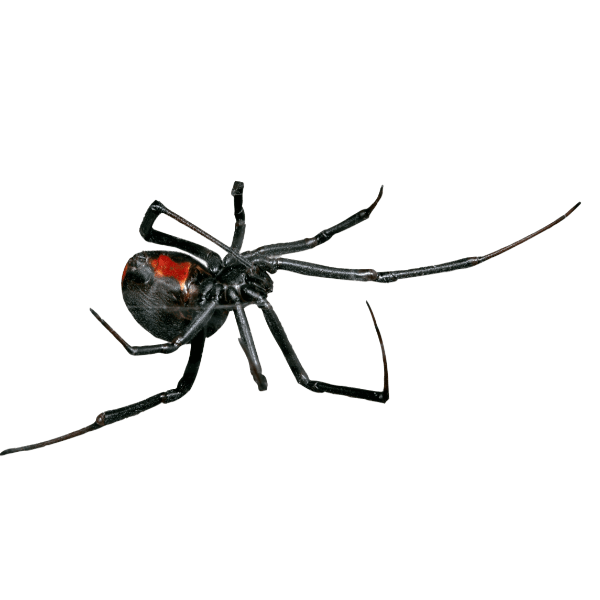
Spiders are a common occurrence in practically all homes across the U.S. In many cases, spiders can be beneficial because of the insects they consume. Even though the majority of household spiders are safe and relatively harmless, some species of spiders have venomous bites that can lead to severe side effects. If you’ve noticed black widows or brown recluse spiders in and around your home, it’s important that you understand how to get rid of these spiders before they bite you or a family member.
Dangerous Spiders to Look Out For
Two of the more venomous spiders that can appear in your home include brown recluse spiders and black widows, both of which you should be on the lookout for. Keep in mind that homes with an insect problem will attract more spiders, which is why it’s important that you tend to any insect issues quickly. When looking specifically at black widows, there are five subspecies of these spiders that exist in the U.S., all of which are venomous. As for brown recluse spiders, they are the most common type of brown spider that can be found in the U.S. However, brown recluse spiders primarily live in the central and south areas of the country.
What Black Widow Spiders Look Like
Black widows have a distinct appearance that’s notable for the red hourglass marking that’s situated beneath their abdomens. The remainder of the black widow has a shiny black appearance. Black widows can span 3-13 millimeters in size. Brown recluse spiders are notable for having a violin-shaped mark directly on the dorsum towards the front of the spider. While much of the spider is comprised of a light brown color, the violin-shaped mark typically comes in a darker shade of brown.
Health Issues Caused By Spider Bites
Male black widows rarely ever bite. On the other hand, female black widows can bite in defense, which typically occurs after laying eggs. The symptoms associated with a black widow bite include heightened blood pressure, nausea, sweating, and a fever. Keep in mind that a black widow bite can be upwards of 15 times stronger than a rattlesnake bite. This pain may continue for a period of 1-3 days. Even though death is unlikely, it’s important that you seek immediate medical attention. Medical attention should also be sought by anyone who experiences a brown recluse bite. The severity of the bite depends on how much venom was sent into the skin.
How to Detect A Black Widow
The clearest sign of a black widow or brown recluse infestation is the existence of webs in or around your home. The webs constructed by black widows are typically messy without an identifiable shape or pattern. You may spot these webs near ground level. Brown recluse spiders love dark spaces like closets and basements. As for black widows, they usually live in boxes and around clothes. Both of these spiders will eat dead and alive bugs alike. If you notice any signs of a spider infestation, consider calling a black widow exterminator.
How to Get Rid of Black Widows
If you’re wondering how to get rid of black widows, it’s highly recommended that you contact Bug-A-Way so that we can get rid of them for you. Despite the danger that black widows pose, it’s possible to remove them from your property for good when you contact the right black widow exterminator. Once the spiders have been removed from your home, you’ll be provided with a comprehensive pest control plan to make sure they don’t return.
If you want to learn more about Bug-A-Way or request a free pest control quote, contact us today by submitting an online request or by giving us a call at (417) 624-2999.
